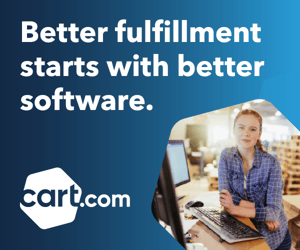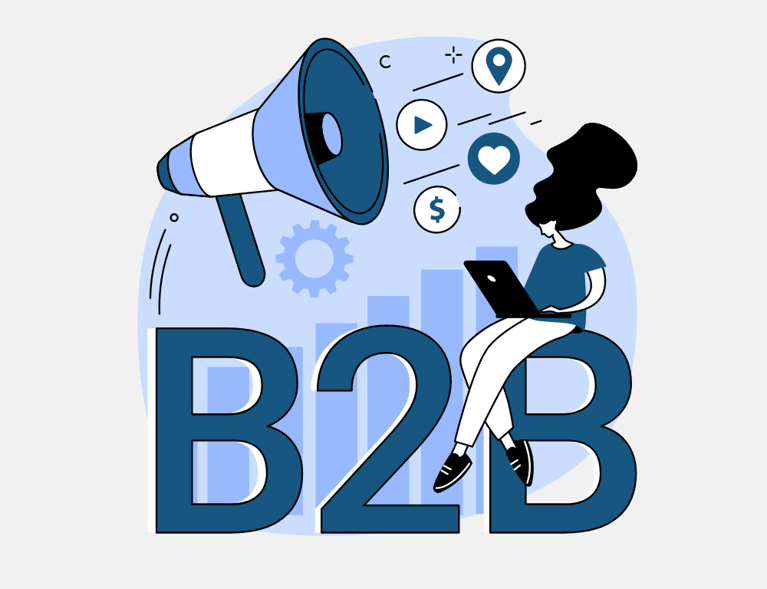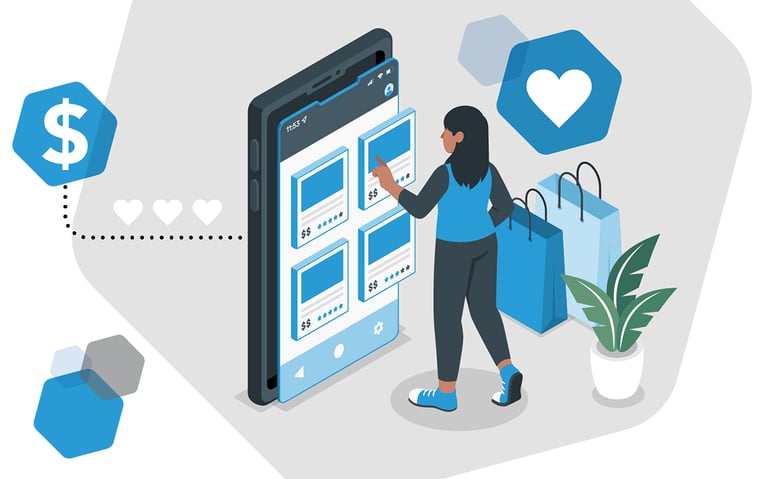While the old methods of engaging with B2B customers still exist, sending invoices and POs through email and snail mail are quickly being taken over by digital experiences. These are things like B2B ecommerce sites, ordering portals and dedicated apps. According to Gartner, 80% of B2B sales interactions between suppliers and buyers will occur in digital channels. This is because 33% of all buyers prefer a seller-free experience. They would much prefer to interact with the supplier online.
Of course, just because it’s digital doesn’t mean it’s automatically going to please B2B buyers. One still has to consider things like usability, convenience and efficiency in the buying process. In this article, we’ll cover why suppliers operating B2B ecommerce stores should invest more in improving the customer experience (CX) through personalization strategies and how to implement tailored experiences into a B2B ecommerce storefront.
Why personalization and CX matter (even in B2B)
In B2B ecommerce, personalization is not just a nice-to-have; it’s a critical component of a successful customer experience. Today’s B2B buyers expect the same level of tailored interactions they receive as consumers. This means businesses must go beyond generic service to provide a customized experience that meets the unique needs and preferences of each client. According to a Forrester study for Adobe, 72% of B2B customers expect fully/mostly personalized content.
Personalization can elevate the B2B customer journey. By leveraging data and insights, companies can customize their offerings to match specific client requirements. Like DTC consumers, B2B buyers benefit from personalized product recommendations based on their industry, purchase history and browsing behavior. This not only streamlines the buying process but also increases the likelihood of repeat purchases and long-term loyalty.
Personalization also allows B2B ecommerce businesses to improve operational efficiency. By using data to anticipate client needs, businesses can proactively address potential issues and streamline the purchasing process. This leads to faster decision-making and reduced friction in the buying journey. To implement personalization strategies and features, B2B ecommerce businesses must learn to employ their storefront capabilities features. Here's how.
How do you personalize through your digital storefront?
Modern B2B ecommerce platforms make it easy to personalize and streamline the customer experience. Here are some of the ways a storefront accomplishes this:
Centralized themes keep microsites consistent
Any supplier that’s serviced a large retail organization knows that they can be very protective of their brand image. Everything must be On Brand, whether it’s customer-facing ads or employee-facing supplier storefronts. Modern B2B storefront platforms let you leverage custom-designed themes and apply them across all the microsites on the network, so that every branch’s ordering portal can comply with corporate’s strict branding guidelines.
One additional benefit of this consistency is interoperability. Since all microsites stem from the same overall platform, employees won’t have to relearn the system if they move between branches. Everything looks and works like they expect.
A customizable storefront is practical, powerful and flexible
Personalized product recommendations aren’t just for buying shoes or novels; they can also apply to B2B buyers. When you consider that 48% of B2B merchants are seeing strong outcomes using personalized product recommendations, you should consider applying it to your own supplier portals.
Today’s B2B customers seek a DTC experience. A B2B commerce platform lets you provide personalized recommendations, store optimization and personalized customer experiences in numerous ways:
- Location-specific product listings: If a specific location or branch has access to a different set of SKUs than other locations (like if they have limited shelf space and can’t stock certain items), then those items can be turned off so that they don’t show up on the microsite and can’t be ordered.
- Item groupings: If employees tend to order multiple items at the same time, like coveralls, boots and hard hats, then you can group all of those together into a “kit.” That greatly reduces the amount of time buyers spend going through the product listings and gives you the opportunity to promote specific products as part of a complete set.
- Customized product recommendations: Utilize data on purchase history, browsing behavior and industry trends to suggest products and services that are most relevant to each client.
- Personalized content: Provide tailored content, such as blogs, whitepapers and case studies, that address the specific challenges and interests of individual customers.
- Targeted promotions and offers: Create customized discounts and promotions based on the client's buying patterns and preferences, making them feel valued and understood.
- Dynamic pricing: Implement dynamic pricing models that adjust based on client relationships, order volumes, and contract terms, ensuring competitive and fair pricing.
- Personalized communication: Use automated tools to send personalized emails and messages, such as order updates, recommendations, and special offers, based on client interactions.
- Account management: Offer dedicated account managers and personalized dashboards where clients can view their order history, track shipments and access tailored services.
- Flexible payment and shipping options: Provide customized payment terms and shipping options that cater to the specific needs and preferences of each client.
How to implement personalization in your B2B commerce strategy
Implementing personalization in a B2B commerce strategy is an ongoing process that requires continuous data collection, analysis and refinement. It means ensuring that customers and clients are receiving relevant and individualized experiences. Here are some key steps to get started:
Gather and segment data
Start by collecting comprehensive data about your target audience, including company information, demographics, website behavior and engagement with marketing materials. Segment this data into distinct groups based on similar characteristics, needs and pain points. For instance, a B2B ecommerce company might segment its audience into product buyers, procurement managers and business owners, each with different purchasing behaviors and requirements.
Leverage technology
Use Customer Relationship Management (CRM) systems to store and manage customer data. These systems enable personalized communication across various marketing channels. Automate personalization through B2B platforms to streamline email campaigns and tailor website content based on user behavior. Dynamic content tools can automatically display relevant information to users based on their browsing history, industry or company size. For example, a CRM can help a manufacturing company send personalized product recommendations to different clients based on their previous purchases and browsing activity.
Create targeted content
Develop content such as blog posts, white papers, and case studies that address the specific needs and challenges of each audience segment. Tailor website content to create a more relevant and engaging experience for each visitor. Segment email lists to personalize communication based on individual interests and past interactions, leading to higher engagement and click-through rates.
Focus on individual interactions
Research individual decision-makers within your target accounts and customize your outreach to demonstrate understanding and build stronger connections. Implement personalized chatbots on your website to provide real-time support and answer user questions based on their specific needs. Customize demos and consultations to showcase how your product directly addresses the unique challenges of each lead or account.
Measure and optimize
Use analytics tools to track the performance of personalized campaigns, including engagement rates, click-through rates and conversion rates. Continuously refine your personalization strategies based on this data to ensure they remain effective in engaging your audience and driving desired results.
Personalize with our B2B commerce platform and store optimization services
Our platform is a powerful, full-featured B2B commerce solution built for brands with complex needs. With built-in features like subscriptions, loyalty/rewards, multi-store capabilities, microsites, invoices, advanced discounting, customer type segmentation and custom payment methods, there's little need for third-party apps or integrations. In addition, our Multi-Store functionality allows you to run thousands of online stores from a single admin, managing themes, inventory, pricing, orders, customers and users all in one place. Contact our expert team today to learn how our B2B platform lets you tailor and personalize the B2B customer experience.
Subscribe to our emails for the latest industry insights!
By entering your email, you agree to receive marketing emails from Cart.com







